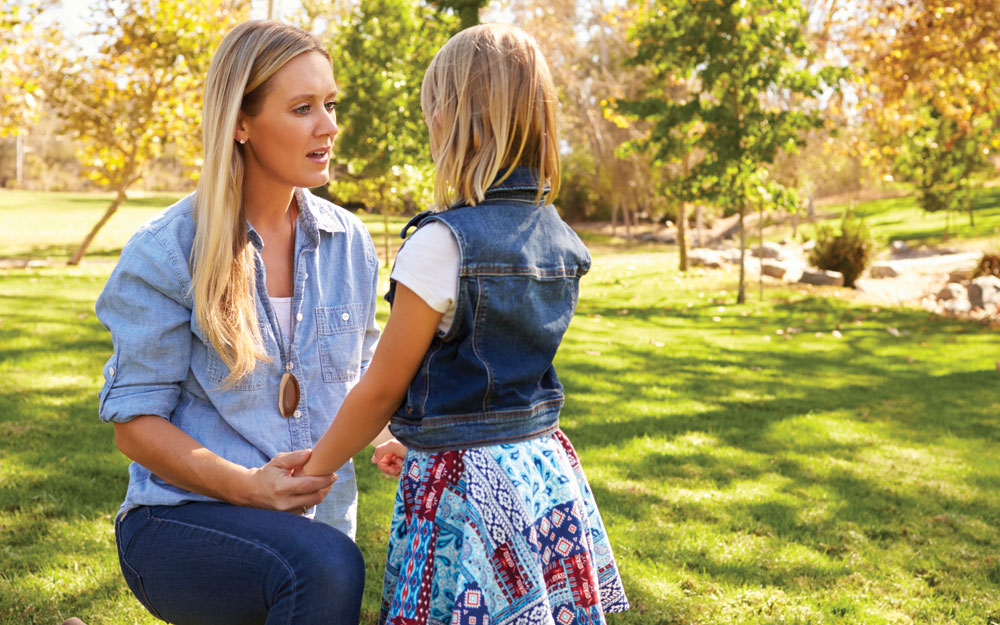
As parents, we do our best and try to do the right thing for our kids. But what if the decisions we make when we think we’re being compassionate and understanding are actually harmful and reinforce the wrong behaviors?
For example, a teen with anxiety or depression will express their symptoms through physical complaints such as a stomachache or headache and not want to go to school. Parents allow them to stay home, and before long the behavior of reporting physical symptoms related to sadness or anxiety is reinforced.
So what is the best way to react when Billy says he doesn’t want to go to school because he has no friends and he doesn’t feel well? It’s important to have measurable and observable criteria for when a child should stay home and offer validation to the child to communicate understanding of the difficulty he is facing at school.
Certainly, a fever above 101.5, vomiting, and diarrhea warrant time away from school, but unless these the criteria are met, kids are typically better off going to school. When they get chicken soup and special attention at home, patterns are reinforced that inadvertently promote the symptoms of anxiety or depression.
It doesn’t mean your child or teen is necessarily lying about the aches and pains, but in some cases, they may have learned how to manifest the symptoms. Parents have a strong instinct for nurturing, and when we’re worried, that instinct can lead to what experts call symptom accommodation.
In the example of the child with a stomachache, what seems like love and nurturing by allowing them to stay home with mom can have some serious consequences. Patterns of avoidance are reinforced, and just as important, we miss the chance to let our children learn how to overcome obstacles.
Other examples of symptom accommodation:
- Reducing age-appropriate responsibilities like household chores or homework because of their symptoms
- Changing family routines such as one parent staying home with child due to anxiety or depression
- Spending time preparing others for a child’s symptoms
It may be easier in the beginning or it worked with your other children, accommodating symptoms may actually lead to the condition growing more serious. And it can impact other family dynamics leading to increased conflict in marriages and dysfunction and stress for other family members.
Building capacity for resilience
By setting firm limits and helping a child learn to go to school or other activities in question, they see what they are capable of. They see that their parents have confidence in their abilities, and they begin to build their own confidence. Acknowledging that it’s hard to go to school when they’re not feeling 100%, they see that they are capable of doing hard things and navigating obstacles.
The risk of giving in
Once limits are set, it’s crucial to stick to them! When you break down and give a screaming child that candy bar in the grocery store after saying no three times, the child learns to scream louder and longer the next time. The same is true with limits around staying home from school or how much screen time kids spend in one day.
Eliminating accommodations
With the understanding that accommodation is allowing anxiety or depression to win, it’s important to change those accommodating behaviors. If your child is looking for constant reassurance, you can try validating that you understand that they’re feeling a certain way without promising that everything will be ok. For example, you could replace, “Nothing bad is going to happen” with “Not having certainty about the outcome is scary. I can understand how much easier this would be to handle if we knew that everything is going to be alright.”
When parents first change their approach to accommodation, they can expect an increase in negative behaviors. While anger or rage is understandable, it is not acceptable. Spelling out rules for safety and respect in your household is critical.
Staying the course will pay off. Continue to remind your child that physical symptoms of anxiety are normal and that mood does not need to dictate behavior. One can feel depressed yet still get out of bed and make positive choices.
For information about kids and anxiety in the classroom, visit our Anxiety in Schools page for a comprehensive set of educational tools, helpful articles, anxiety-reducing exercises, and the new “Anxiety in Schools” podcast series.


